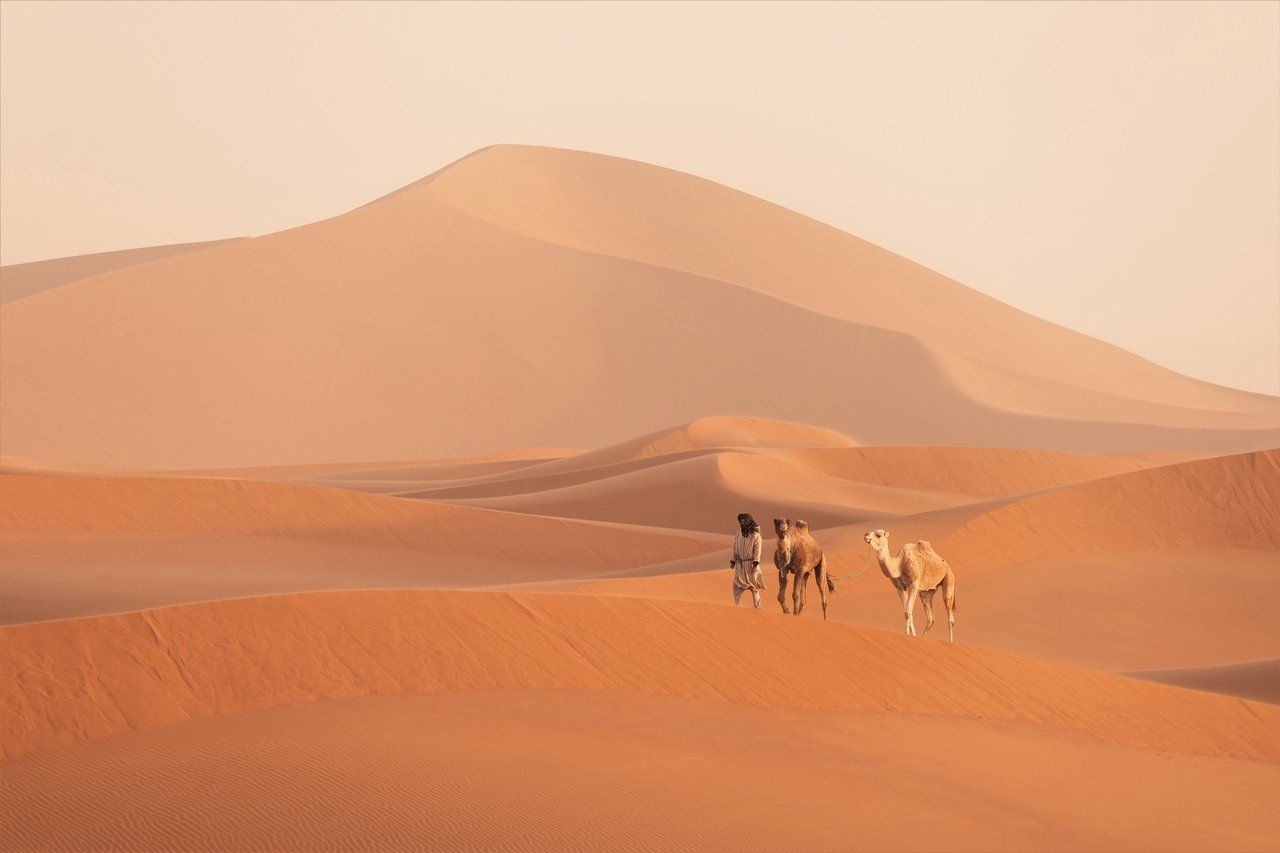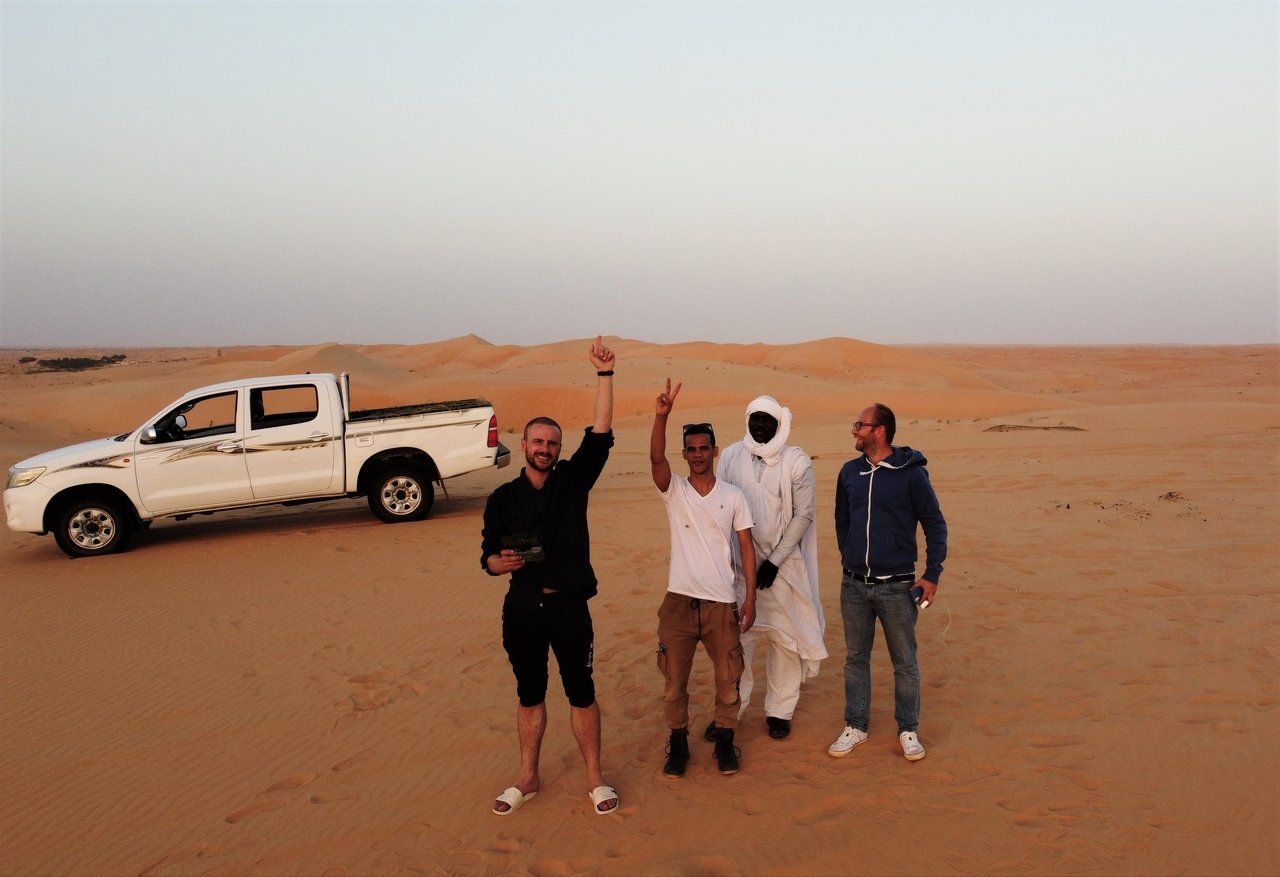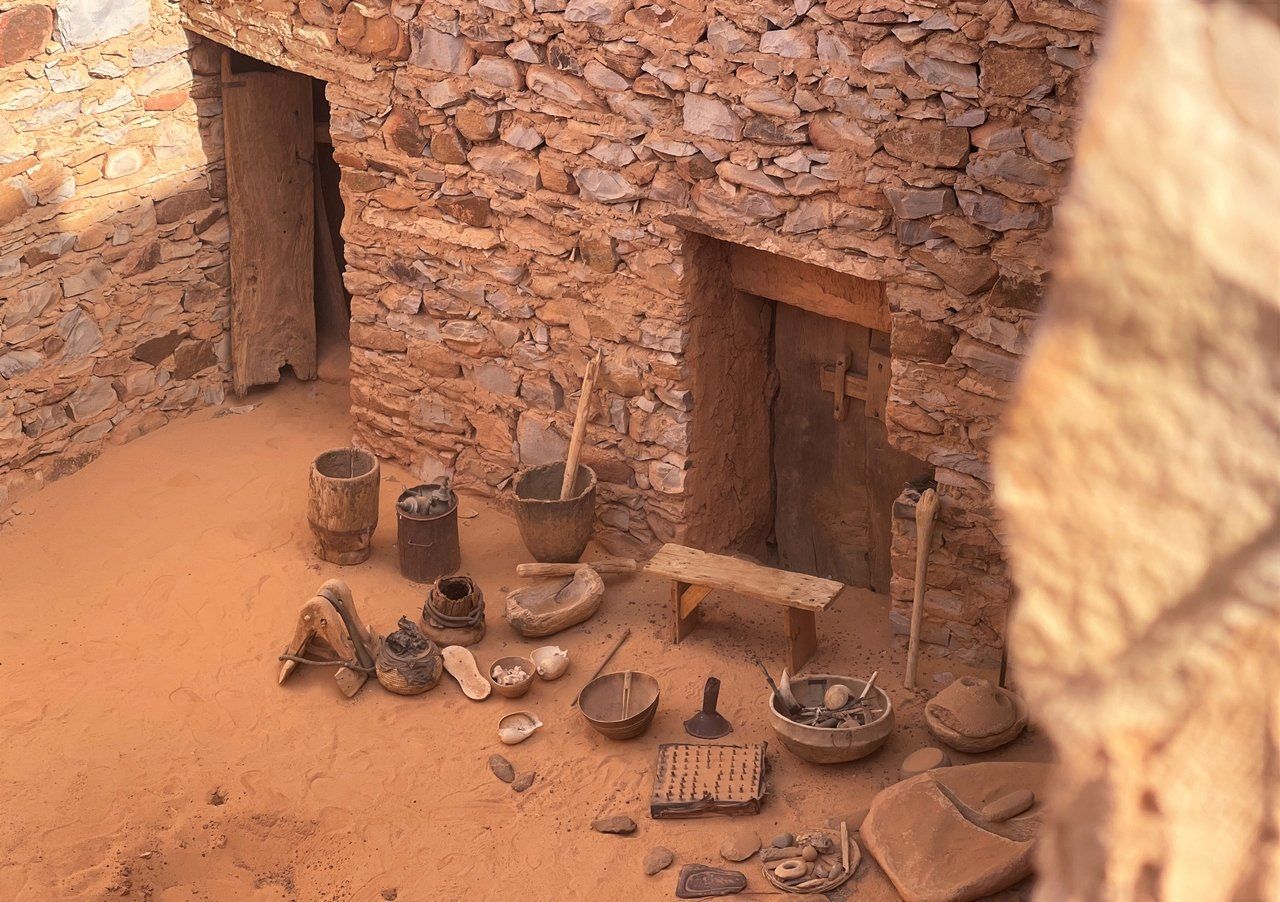In the middle of the ancient cultural region of Dar Tichitt lie the fragments of the Neolithic settlement of Akreijit. They are not the only ruins worth seeing in Mauritania, but they are by far the oldest. Situated north of the former Aoukar depression, which was a huge inland lake until 1000 BC, there were various phases of settlement here that came to an end around 400 BC. Much of this remains and can still be seen today, including the buildings. The remains of the stone houses represent the oldest preserved settlements in all of West Africa. The walls extend over 1.2 hectares. There is no lack of findings in Akreijit, such as arrowheads and rubbing bowls. Much of it can be seen in a small museum in Akreijit. The owner of the museum answers open questions and also offers guided tours where he shows everything that normally escapes visitors. Many historical props are also offered for sale by the mostly nomadic inhabitants. Hardly anywhere else in Mauritania are there more impressive rock paintings than in Akreijit. The place is located 30 km east of Tichitt and is embedded as a destination in two of our tours. We recommend a one-day stay as well as a visit to nearby natural phenomena such as the Elephant Rock. Afterwards we drive southeast to Oualata.





Certainly the best preserved relic of the Tichitt culture is Akreijit. This culture, which extended over the regions of Dār Tichitt, Dār Oualata, Dār Néma, and Dār Tagant, was one of the largest Neolithic centers in West Africa and as such receives extensive attention in academic research.
The Tichitt culture was closely linked geographically to the Aoukar Depression in what is now southeastern Mauritania. If this former lake had not dried up around 1000 BC, its dimensions would extend from Kiffa to Oualata. At the time of the Neolithic, the edge of the lake was inhabited, with three phases being distinguished. The Naghez phase (1200-1000 BC) consisted mainly of homesteads. Self-sufficiency was ensured by livestock, fishing, agriculture (including millet, rice, sorghum sweet potatoes and palm fruits) and the gathering of wild grasses. The people in following Chekba phase (1000-700 B.C.) had to provide food without fishing. Lack of rain had caused the lakes to dry up. Nevertheless, other forms of self-sufficiency remained, as did little change in architecture. Due to growing pressure from the Berbers coming from the north, protective walls and gates were built. It is estimated that the inhabitants left the Dār Tichitt around 400 BC due to the more inhospitable conditions of the Akanjeir phase. Even today, numerous evidences of the former settlement can be found. Interesting are, for example, arrowheads, which are exhibited among others in the small museum of Akreijit. These are often made of slate, the only available local rock. Other materials had to be imported. In addition, there are other items such as rubbing bowls and gouges. By the way, rock engravings are spread all over the area of the former Tichitt culture. By far not all of them have been discovered. Famous archaeologists like Thierry Tillet are still searching in Mauritania. In Akreijit, at any rate, we know of some drawings to which we can pay a visit. The structural ruins on site are also absolutely worth seeing.
We combine a visit to Akreijit, the oldest surviving settlement in West Africa, with a general tour of Tagant and eastern Mauritania. Two of our tours take in the area via Tidjikja-Tichitt-Akreijit-Elephant Rock-Oualata, and we can also arrange trips that meet your ideas on request. For a visit to Mauritania's south enough time should be planned, from Tidjikja to Oualata there are no paved roads.